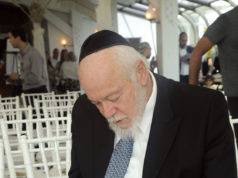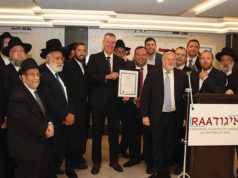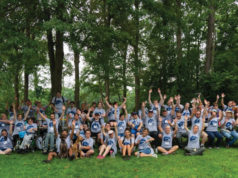 Quebec is an Algonquin word, meaning “where the river narrows.” The city is situated at the narrowest point on the Saint Lawrence River. It is a world heritage site, and is considered to be the safest city in North America. It has the oldest commercial district in North America on Little Champlain Street, a haven for artists and souvenir hunters.
Quebec is an Algonquin word, meaning “where the river narrows.” The city is situated at the narrowest point on the Saint Lawrence River. It is a world heritage site, and is considered to be the safest city in North America. It has the oldest commercial district in North America on Little Champlain Street, a haven for artists and souvenir hunters.
Situated on Cap Diamant overlooking the Saint Lawrence River, the old city is divided  into lower and upper parts. There are 28 stairways connecting the two.
into lower and upper parts. There are 28 stairways connecting the two.
Unknown to most tourists is the building on the corner of 20 Rue Cremazie in the newer part of the Upper City. Now housing the Penelope Theater, it was once the Beth Israel Ohev Shalom Synagogue, and the center of Jewish life in Quebec City. But the city’s Jewish history, which at its height in the 1950s and 1960s included 400 English-speaking Ashkenazi families, two synagogues and daily services, a Talmud Torah  with over 90 students, four teachers, a kosher butcher and grocer, is gone. In its place, remnants of the former community have reemerged with a new, mostly Sephardic French-speaking Jewish community unique in North America.
with over 90 students, four teachers, a kosher butcher and grocer, is gone. In its place, remnants of the former community have reemerged with a new, mostly Sephardic French-speaking Jewish community unique in North America.
The Jewish presence in Quebec City is over two centuries old. During the French period in the 1600s and first half of the 1700s, Jews were banned by King Louis XIV from settling in what was then New France.
The first attempt by a Jew to settle in Quebec was unsuccessful. In 1759, after five unsuccessful attempts, the British army, under General James Wolfe scaled the cliffs along Quebec City and surprised the Marquis de Montcalm and his French troops defending the city. In a twenty minute battle on the Plains of Abraham, the course of history and the course of Jewish life in North America were irrevocably changed.
The first Jew to arrive with the conquering British army was Lieutenant Aaron Hart. He settled in the city of Trois-Rivieres. His son, Ezekiel was elected in 1807 to the legislature of what was then primarily French-speaking Lower Canada. Unwilling to take the oath of office on a Christian Bible and refusing to remove his skullcap, he was expelled from the legislature.
It was only a generation later in 1832, with the help of Louis-Joseph Papineau and his French-Canadian political party, that Ezekiel’s son, Samuel Becancour Hart, became the first Jew to hold political office in the Quebec Parliament.
That year, the Law of 1832 was passed granting Jews full political and civil rights. One hundred and fifty years later, Premier Rene Leveque would invite Quebec Jews to celebrate this special anniversary. Quebec was the first province in Canada as well as in the British Empire where Jews received full civil rights.
In 1850, a Jewish cemetery, Beth Israel, was consecrated in the St. Foy section of Quebec. It still exists today. The cemetery is a tangible reminder of the pioneer Jewish community founded in 1759.
In 1852, the first synagogue in Quebec City was founded in the Upper City. It was called Beth Israel. A second synagogue, Ohev Shalom was established in 1907 in the Saint-Roch section of the Lower City. The two synagogues were eventually combined in 1908. A new synagogue was later built in the Upper City, but, on the eve of its inauguration in 1944, it was burned down by unknown arsonists. The synagogue was rebuilt in 1954 and survived until the end of the 1980s.
At the start of the 20th century, newly arrived Jewish immigrants fleeing Eastern Europe established many small businesses in the commercial downtown district of the Lower City. One twenty year old immigrant from Kiev, Maurice Pollack, arrived in 1905 and started his career as a peddler. Eventually he became the owner of one of the biggest department stores in Quebec. Another “rags to riches” immigrant, was Marcel Adams who became the largest real estate owner in Quebec after the government.
In 2008, to commemorate the 400th anniversary of the founding of Quebec City, Simon Jacobs, the city’s Jewish historian, with the assistance of the municipal and provincial government of Quebec, produced an exhibition, Shalom Quebec, for the city. The exhibition documented the more than 200 year existence of the Quebec City Jewish community. The exhibition can still be viewed on the Internet.
Today, there are approximately 400 Jews living in Quebec City. One hundred and forty families are affiliated with the synagogue, now located on 1251 Avenue de Mérici in the Sillery suburb of Quebec City. The synagogue’s former spiritual leader, Rabbi Samuel Prager, led Beth Israel Ohev Shalom’s congregation from 1967 until 2001, commuting three hours from Montreal weekly to spend Thursdays through Sundays in the community.
The present rabbi, French-born David Levin, is a Chabad shaliach who has invigorated new life into the community. Every Friday night, 42 students from France studying at nearby Laval University join the rabbi’s family to light Sabbath candles, and share a communal meal together. The rabbi’s wife also provides more than 400 meals annually for the hundreds of visitors from Montreal, Toronto, and elsewhere who want to see France without having to cross the Atlantic.
“Quebec City is a small France, one hour’s flight from New York,” says Rabbi Levin. “If you want to see France, you only have to travel one hour before the Sabbath. We bring kosher food to tourists staying in hotels. You can come and stay for 24 or 48 hours, and then go back to New York, all in one weekend.”
Rabbi Levin paused reflectively, “in Quebec City, you’re like in a dream,” he mused. “then, you come back to reality.”
___________
Harold Gellis writes and lectures on Jewish history, Jewish communities, and religious life, and is an expert on demographic and sociological trends in the Jewish world.



